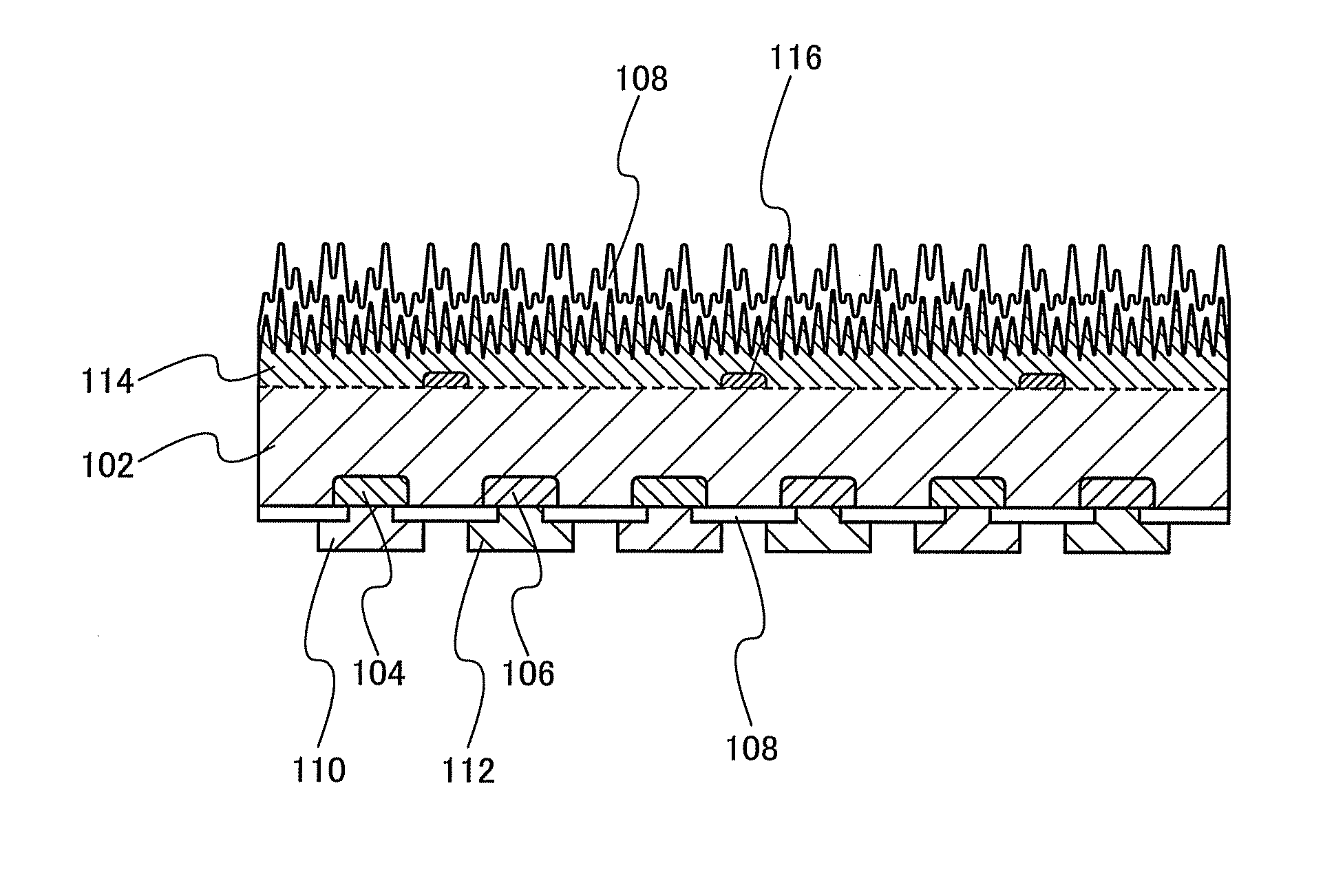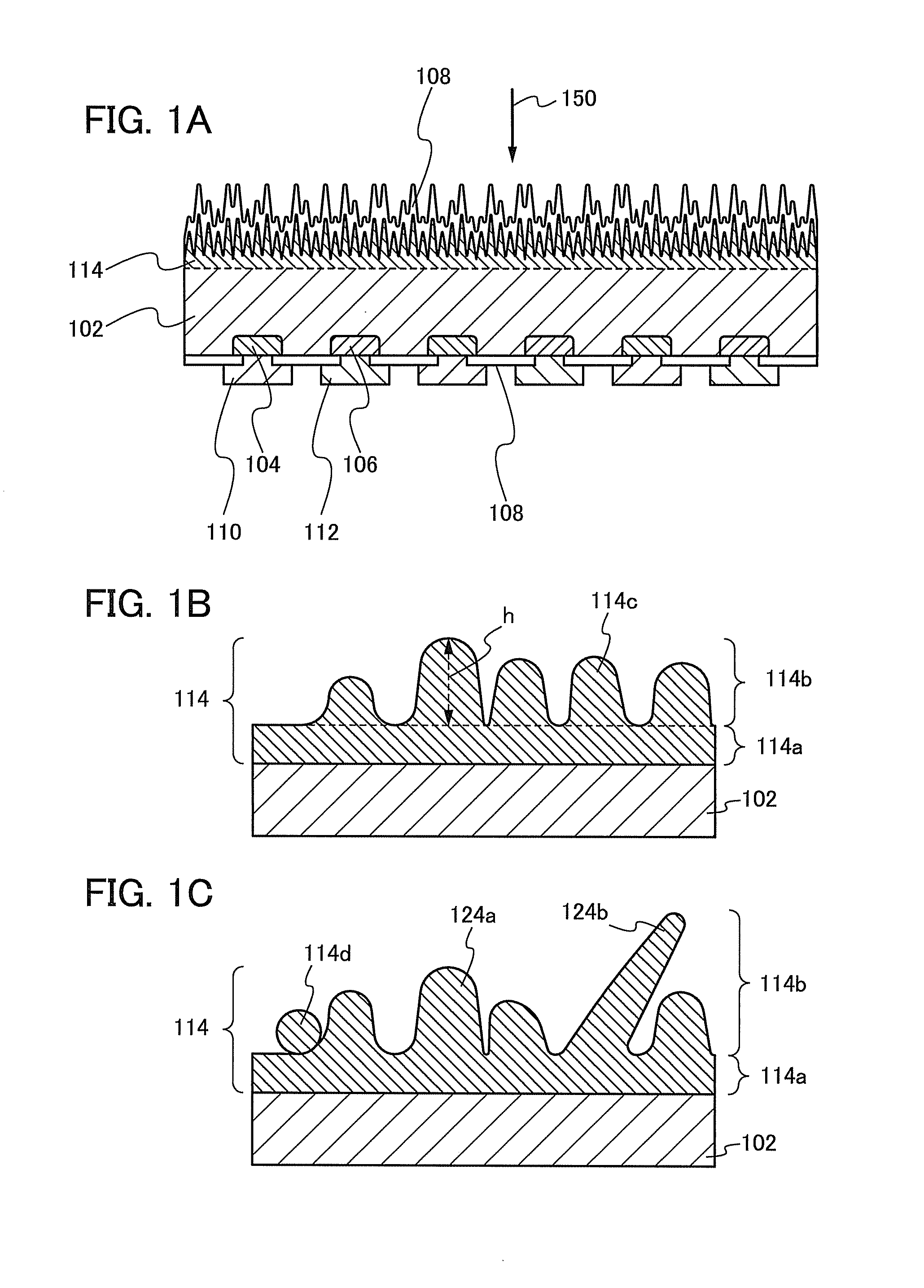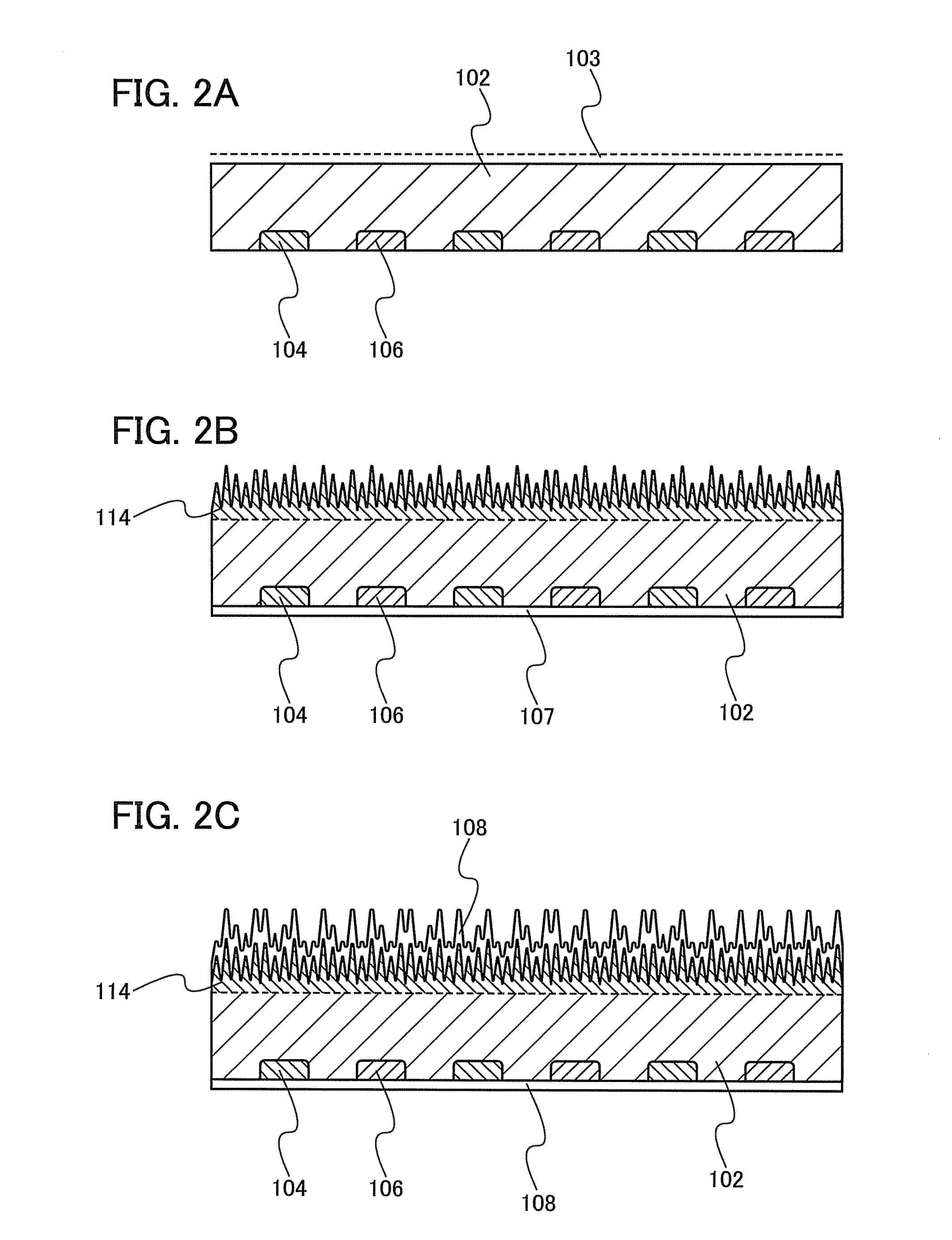Photoelectric Conversion Device and Manufacturing Method Thereof
a technology of photoelectric conversion and manufacturing method, which is applied in the direction of semiconductor devices, chemical vapor deposition coatings, coatings, etc., can solve the problems of affecting the character of solar cells and needing attention to contamination, so as to reduce the loss of light due to reflection on the light-receiving surface, prevent contamination of semiconductor substrates, and increase conversion efficiency
- Summary
- Abstract
- Description
- Claims
- Application Information
AI Technical Summary
Benefits of technology
Problems solved by technology
Method used
Image
Examples
embodiment 1
[0028]In this embodiment, structural examples of a photoelectric conversion device will be described.
[0029]FIGS. 1A to 1C illustrate structural examples of a photoelectric conversion device.
[0030]The photoelectric conversion device includes a semiconductor substrate 102 and receives light from the front surface (also referred to as light-receiving surface) side of the semiconductor substrate 102. In one embodiment of the present invention, the photoelectric conversion device has an uneven structure for reducing reflection of incident light 150 on a front surface of the semiconductor substrate 102. The structure will be specifically described below.
[0031]A group of whiskers 114 is formed on the front surface of the semiconductor substrate 102 as the uneven structure. The group of whiskers 114 can reduce surface reflection of the incident light 150 on the light-receiving surface. The group of whiskers 114 will be specifically described below.
[0032]FIG. 1B is an enlarged view of the gr...
embodiment 2
[0057]In this embodiment, an example of a manufacturing method of a photoelectric conversion device will be described.
[0058]A metal layer 103 is formed on the front surface (a light-receiving surface) of the semiconductor substrate 102 (FIG. 2A).
[0059]Here, a p-type single crystal silicon substrate is used as the semiconductor substrate 102. Note that an n-type substrate may be used.
[0060]It is preferable that the metal layer 103 be formed to have an extremely small thickness of approximately several nanometers. The extremely small thickness of the metal layer 103 makes it possible to suppress absorption or reflection of incident light from the front surface of the semiconductor substrate 102 by the metal layer 103. Here, the thickness of the metal layer 103 is greater than or equal to 1 nm and less than or equal to 10 nm.
[0061]Further, it is preferable that metal materials contained in the metal layer 103 be dispersed homogeneously in the front surface of the semiconductor substrat...
embodiment 3
[0084]In this embodiment, an example of a manufacturing method of a photoelectric conversion device, which is different from the manufacturing method described in Embodiment 2, will be described.
[0085]In Embodiment 2, the metal layer 103 is formed in a film form on the front surface of the semiconductor substrate 102.
[0086]In contrast, in this embodiment, an island-shaped metal layer is formed on the front surface of the semiconductor substrate 102, instead of the metal layer 103 illustrated in FIG. 2A. The island-shaped metal layer may be formed by a screen printing method, an evaporation method, or the like.
[0087]Accordingly, in a photoelectric conversion device after manufacture, an island-shaped metal layer 116 is provided between the front surface of the semiconductor substrate 102 and the group of whiskers 114 (FIG. 4). When the island-shaped metal layer 116 is formed, reflection or the like can be reduced as compared to the case where a metal layer is formed over the entire s...
PUM
| Property | Measurement | Unit |
|---|---|---|
| temperature | aaaaa | aaaaa |
| diameter | aaaaa | aaaaa |
| length | aaaaa | aaaaa |
Abstract
Description
Claims
Application Information
 Login to View More
Login to View More - R&D
- Intellectual Property
- Life Sciences
- Materials
- Tech Scout
- Unparalleled Data Quality
- Higher Quality Content
- 60% Fewer Hallucinations
Browse by: Latest US Patents, China's latest patents, Technical Efficacy Thesaurus, Application Domain, Technology Topic, Popular Technical Reports.
© 2025 PatSnap. All rights reserved.Legal|Privacy policy|Modern Slavery Act Transparency Statement|Sitemap|About US| Contact US: help@patsnap.com



